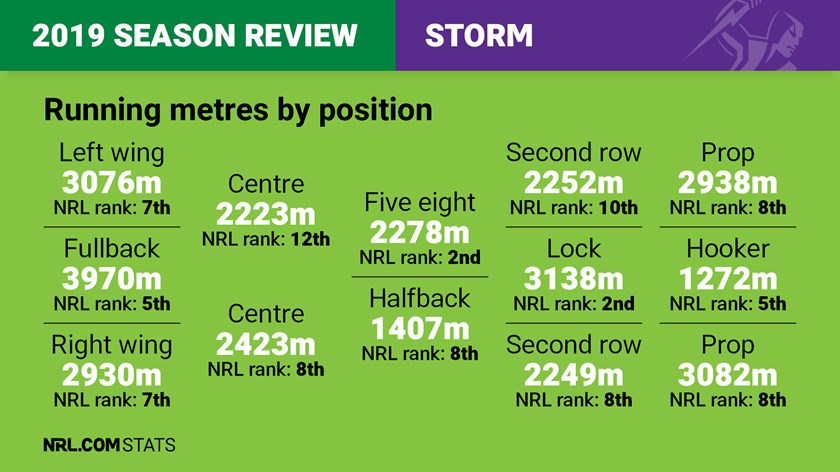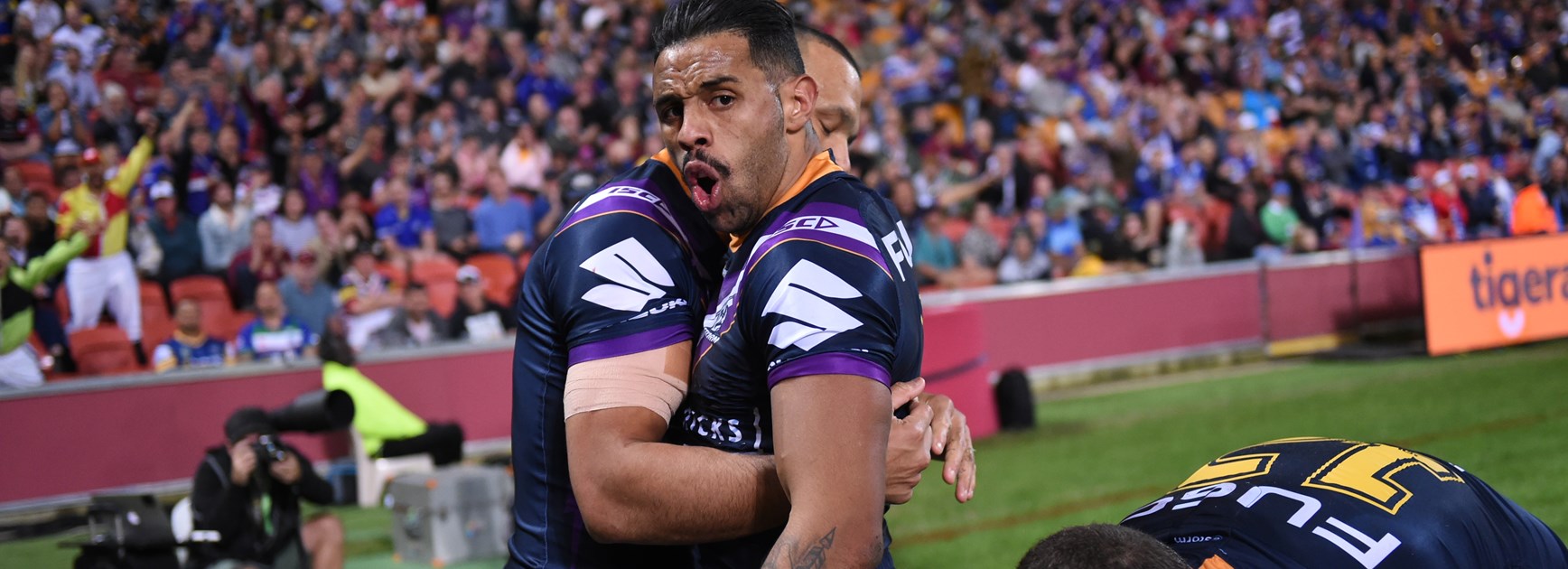Melbourne were head and shoulders the best side throughout the regular season but stumbled one game short of a fourth-straight grand final appearance.
With some writing them off after the retirement of legend Billy Slater, the Storm juggernaut finished six competition points clear of the chasing pack to claim their third minor premiership in four years.
After losing to Canberra in week one of the finals before flogging Parramatta, Melbourne had their hearts broken again by the Roosters, who beat them in last year's decider.
But those wishing on the Storm's demise could be waiting a while, with young talents like Ryan Papenhuyzen, Jahrome Hughes, Justin Olam, Brandon Smith and Tino Fa'asuamaleaui coming into their own.
Home & Away record
9-3 at home, 11-1 away
Once again, AAMI Park was a fortress for Melbourne.
Only three teams emerged victorious from the daunting journey south in the regular season – the Roosters (21-20 in golden point), Sea Eagles (11-10 in golden point) and Raiders (22-18).
The Storm averaged 25.9 points per game on home soil – well above the competition average of 21.4 – and conceded a miserly 14.2 points.
Canberra again stunned Melbourne in Victoria in the qualifying final before the purple force smashed the Eels at AAMI Park the next week.
But it was away that Melbourne really asserted their dominance, dropping just one of 12 matches – against rivals Cronulla at PointsBet Stadium.
They incredibly posted more points (26.7) and conceded fewer (10.8) on the road than at home. To highlight how dominant the Storm were on the road, the competition average for conceded points per away match was 21.4.
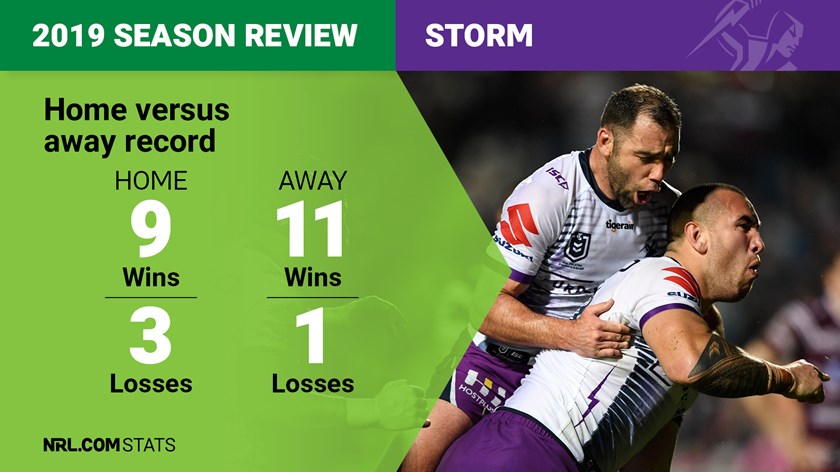
Post-contact metres
Melbourne ranked second for post-contact metres per match with 481 (2.65 PCM per run). The Wests Tigers (487) took the top spot.
No Storm players made the individual top 10 chart, which was headed by Broncos prop Payne Haas (1438 PCM).
Workhorse lock Dale Finucane led his side with 1089 in 23 regular season appearances (47.3 per game).
But it was bench forward Brandon Smith who had the most impact per carry at an average of 3.72 post-contact metres (eighth in the competition). Not bad for someone who is primarily a hooker.

Try scoring – attacking channels
It was left side, strong side for the Storm as 50 of their 104 regular season tries (48%) came down the edge featuring the team's top try-scorer Josh Addo-Carr and brilliant playmaker Cameron Munster.
Addo-Carr bagged 14 four-pointers; 11 of them on the left wing.
Melbourne scored a further 27 tries on the right with Suliasi Vunivalu (nine regular season tries) leading the way, while another 27 were posted in the middle.
Jahrome Hughes and Ryan Papenhuyzen collected eight tries apiece, frequently touching down through the centre having both played fullback this year.
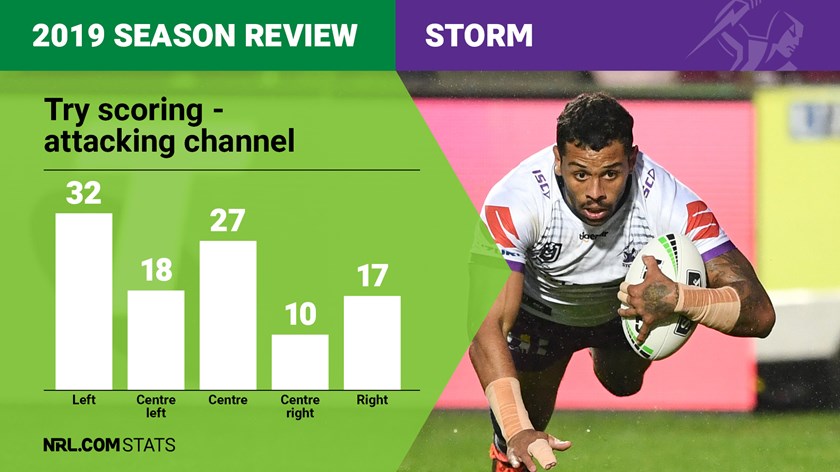
Tries conceded – defending channels
Boasting the league's best defensive record after 25 rounds, Melbourne only conceded 50 tries in the regular season. They scored more tries themselves on their left edge alone.
But there was a relative weakness on their right side – comprised of Suliasi Vunivalu, Will Chambers, Brodie Croft and Felise Kaufusi for the majority of the year – having leaked 29 tries in the right and centre-right channels.
Halfback Croft, who was dumped in favour of Jahrome Hughes after round 22, contributed 13 try causes. Vunivalu was responsible for 21 try causes.
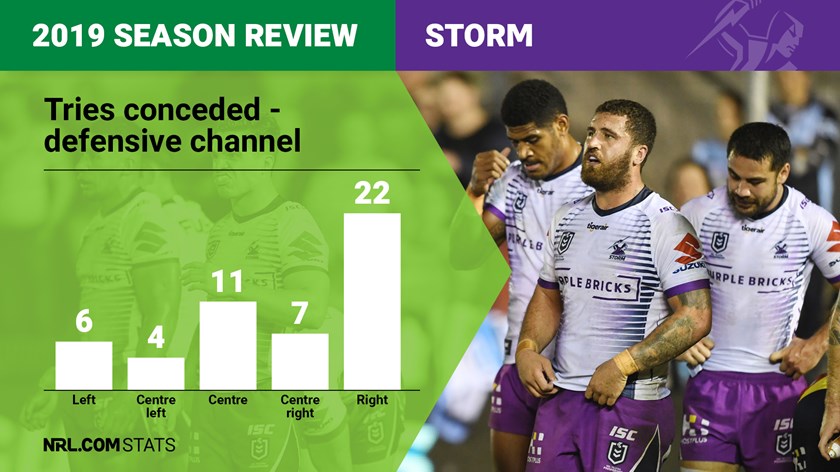
Tries conceded from penalties
While 42% of tries scored against Melbourne came in the set after a penalty, it's certainly no cause for concern.
Given the Storm were ranked fifth for penalties conceded in the regular season with 163, it was an impressive feat to allow just 21 tries after being pinged.
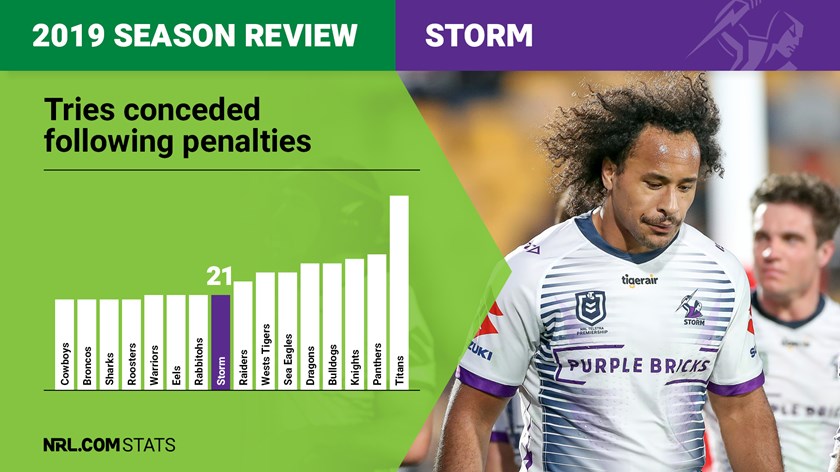
Metres gained from offloads
The Storm were selective when offloading, throwing the third-lowest amount (199) of all teams in the regular season.
This cautious approach to promoting the ball was reflected in their last-placed ranking for metres gained in the carry after an offload (1141 overall/47.5 per game).
Melbourne averaged an additional six metres after an offload, with Brodie Croft (73.6 overall/12.3 per offload) the biggest beneficiary.
Prop Nelson Asofa-Solomona's offloads provided the most overall metres for his teammates (172.6/4.9 per offload).

Goal-kicking accuracy
The Storm booted 107 goals out of 132 attempts for an overall success rate of 81.03%.
Regular kicker Cameron Smith landed 99 of 120 shots at 83%. St George Illawarra's Gareth Widdop (88.2%) and Penrith's Nathan Cleary (87%) led this department.
Melbourne missed out on 50 points through unsuccessful goal attempts and would have beaten Manly in round 19 if Smith had been on target with his second and final goal attempt.
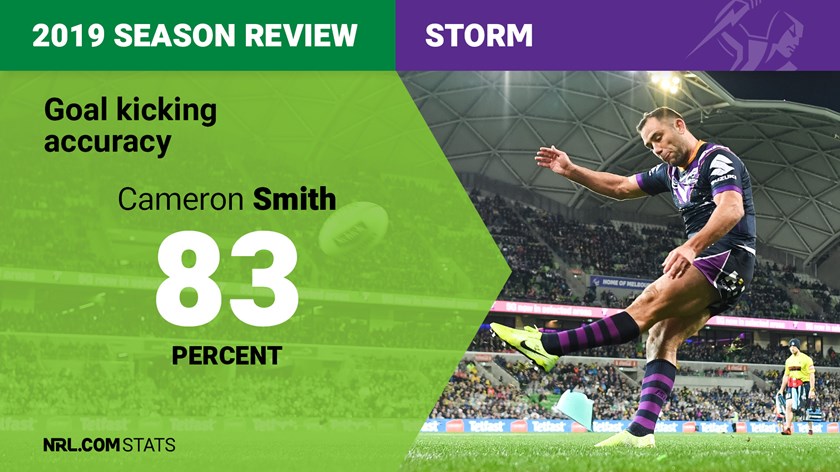
Squad retention vs competition points
Building cohesion and understanding in a team is paramount to success and the data shows a direct correlation between the number of players retained from 2017 to a club's competition points in 2019.
Ranking first, the Storm retained almost 60% of their squad from 2017 and scored 42 competition points.
Fellow top-four sides the Roosters, Rabbitohs and Raiders and fifth-placed Parramatta all had retention rates of more than 45%.
No bottom eight team had a rate above 40% except for North Queensland.
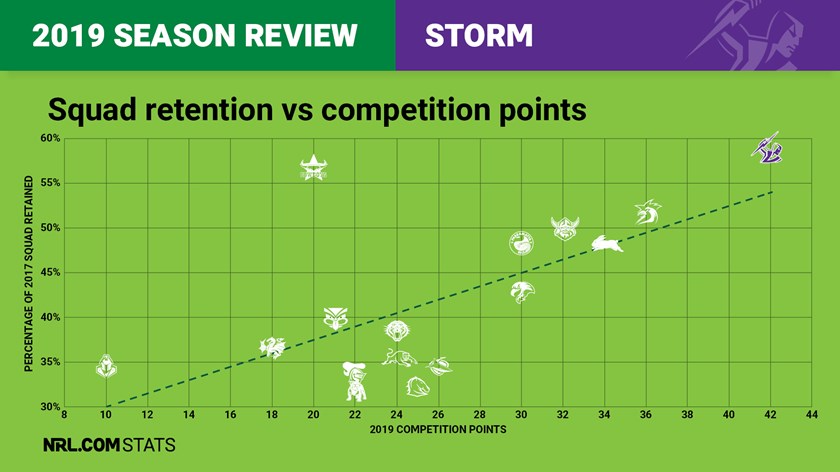
Attacking and defending inside 20m
The Storm were clinical from close-range, averaging a try every 8.9 play-the-balls in an opponent's 20-metre zone.
Only premiers the Roosters (8) and Cronulla (8.8) had better strike rates.
Defending in their red-zone, Melbourne leaked a try every 12.3 plays (sixth in the competition). The Roosters (14.2) were again the best.
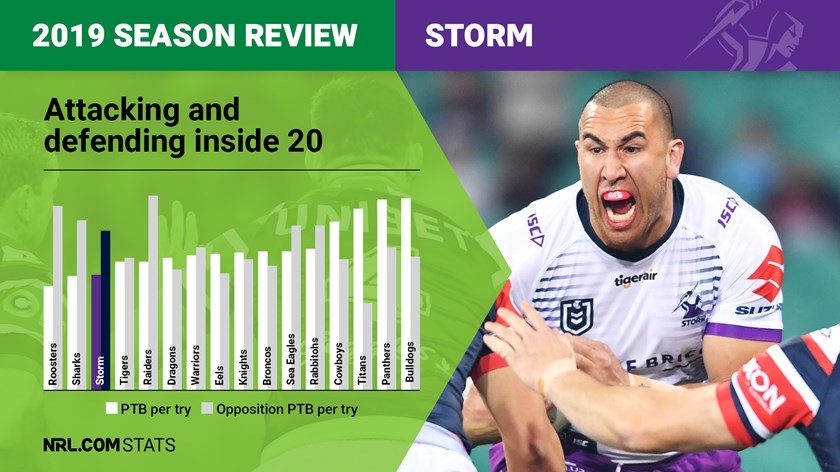
Running metres by position
Melbourne's five-eighth position usually occupied by Cameron Munster was ranked second in the competition for run metres (2278).
Dale Finucane's nonstop efforts helped propel the lock spot into second place as well (3138m).
Elsewhere, the fullback role split between Jahrome Hughes and Ryan Papenhuyzen and Cameron Smith's hooking position came in fifth.
Both wings finished seventh while the centres were ranked 12th and eighth respectively.
